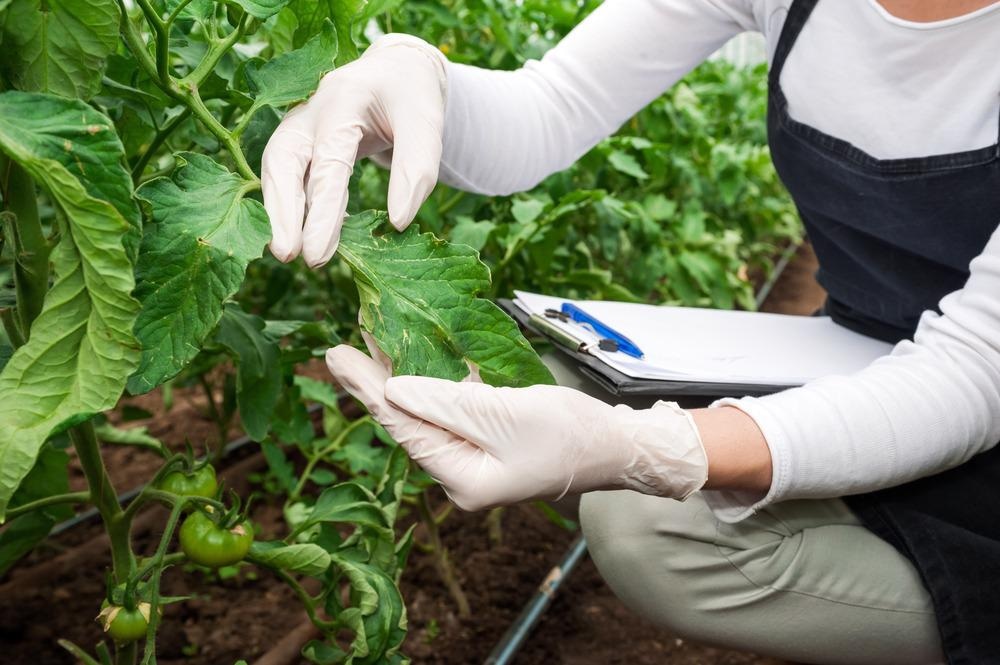Adsorption of amphiphilic proteins onto the surface of titanium dioxide nanoparticles (TiO2 NPs) causes protein coronas that alter their gastrointestinal fate. However, the factors influencing the protein corona formation remain unclear. In an article recently published in the Journal of Agricultural and Food Chemistry, the authors explored the influence of temperature on four plant proteins.

Study: Impact of Heat Treatment on the Structure and Properties of the Plant Protein Corona Formed around TiO2 Nanoparticles. Image Credit: Vlad Teodor/Shutterstock.com
Application of TiO2 NPs in the Food Manufacturing Process
Inorganic nanomaterials are used extensively in material science, pharmaceutical development, chemical engineering, and cosmetic science. A fraction of NPs added to powdered TiO2 (E171) is used as a food whitener or brightener.
The high refractive index and the dimensions of these NPs cause intense light scattering, thus altering the optical properties of the food material. Since inorganic NPs like TiO2 NPs on the food products enter the human body, it is critical to understand the behavior and properties of the inorganic NPs.
NPs in contact with food material like protein form a coating around it called protein corona. The presence of protein corona may impact the human gastrointestinal tract after ingestion. Previous studies revealed that few protein coronas altered physicochemical and biological properties of proteins and reduced their bioactivity and bioavailability.
Food manufacturing processes like thermal operations may alter the structure and functionality of proteins. For example, a high-temperature increase breaks the disulfide bond of rice gluten, and heat treatments of albumin change the protein's functional properties.
Effect of Temperature on Proteins
In the present study, the authors analyzed the interaction between TiO2 NPs and four proteins (soy protein isolate, glutenin, zein, and gliadin). They initially analyzed the effect of temperature on protein's structural properties.
Later, quartz crystal microbalance with dissipation (QCM-D) was employed to understand the changes in protein structure and its binding affinity to TiO2 on heat treatment. Following heat treatment of the four plant proteins at different temperatures, the authors characterized their structural properties by employing ultraviolet−visible (UV-Vis) spectroscopy, fluorescence spectroscopy, zeta potential, dynamic light scattering (DLS), and transmission electron microscopy (TEM).
Research Findings
The UV-Vis absorption spectra revealed peaks at 220 nanometers and around 260 to 280 nanometers because of the protein's peptide bond backbone structure and aromatic amino acids.
The authors observed an increase in peak heights in soy protein and glutenin after their heat treatment at 100 degrees Celsius. However, zein showed an initial increasing trend and later a decreasing trend when heated at a higher temperature. Moreover, the authors observed a slight blueshift for the peak at 260 nanometers indicating polarity change in aromatic groups. Gliadin showed an unclear trend in absorption spectra. The above results indicate aggregation and unfolding of proteins during heat treatment.
The aromatic amino acids such as tryptophan, phenylalanine, and tyrosine lead to fluorescence in proteins. Upon conformational changes, there was a change in fluorescence spectra due to an altered molecular environment around aromatic rings.
Thermal treatment on gliadin did not show any significant effect on the fluorescence spectra, suggesting that the protein is heat resistant. For zein protein, the fluorescence intensity increased with temperature, indicating protein dissociation and unfolding.
The change in magnitude of the zeta potential values for proteins indicates the alterations in the charged group number or type on the protein's surface upon heating. The authors hypothesized that heating could have altered the solvent's pH, thus altering the ionization of the surface groups.
The DLS studies indicate the aggregation of all four proteins upon heat treatment, indicated by increased particle size. The authors observed a shift in particle size distribution towards the left, suggesting the dissociation of proteins due to heating. This information revealed the heat resistance of glutenin protein. In the other three proteins, aggregation and dissociation were observed. The DLS results indicate that the protein type is critical to determining its fate toward thermal treatment.
The TEM images for glutenin revealed a smooth sphere which showed a decreased size after heating. The large irregular clumps observed before heating in soy protein turned into smaller irregular fragments on heat treatment. Before heating, the gliadin proteins were small spherical particles, and they changed to large irregular clumps after heat treatment. Similarly, the large smooth spheres of zein protein particles observed before heating transformed into spherical clusters upon heat treatment.
Conclusion
In conclusion, the authors examined the impact of temperature and protein type on the structural properties of proteins and their effects on protein corona formation using inorganic NPs.
The QCM-D monitoring revealed that temperature affects protein corona formation in the total mass of protein adsorption and protein fractions in hard and soft layers. The temperature also impacted protein behavior such as aggregation, unfolding, and dissociation. This study helps demonstrates the interaction between ingredients in the food matrix and inorganic NPs.
Reference
Jiang B, Zhao Q, Shan H, Guo Y, Xu X, Mcclements DJ (2022). Impact of Heat Treatment on the Structure and Properties of the Plant Protein Corona Formed around TiO2. Nanoparticles https://pubs.acs.org/doi/10.1021/acs.jafc.2c01650
Disclaimer: The views expressed here are those of the author expressed in their private capacity and do not necessarily represent the views of AZoM.com Limited T/A AZoNetwork the owner and operator of this website. This disclaimer forms part of the Terms and conditions of use of this website.